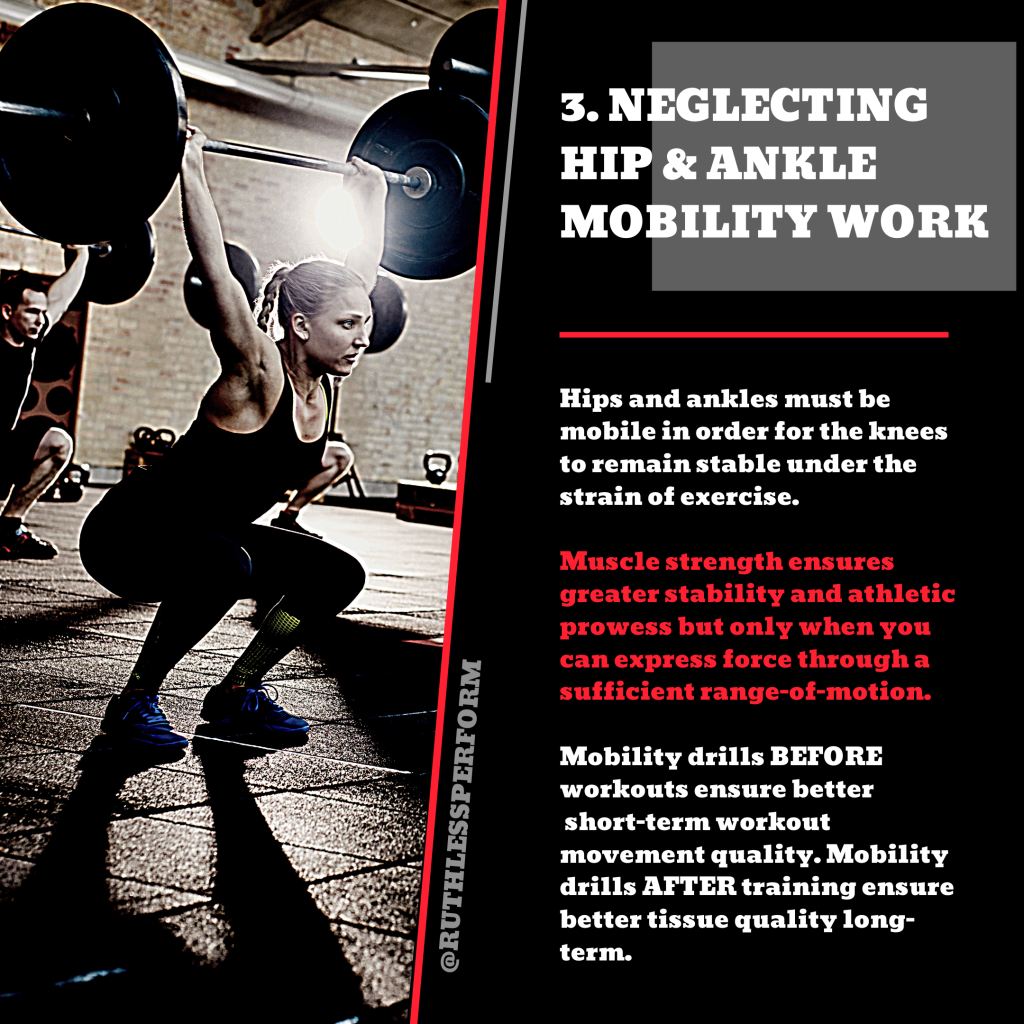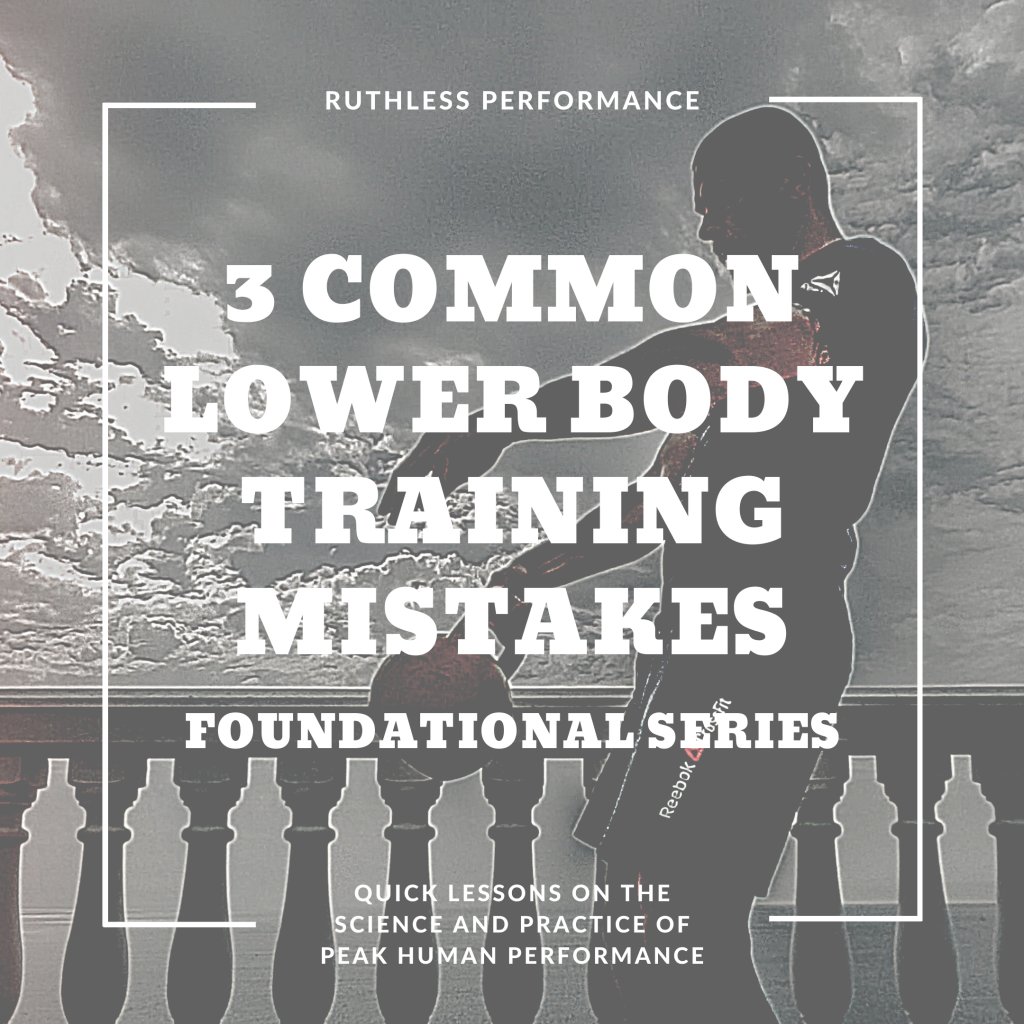If I’m being honest, the most common lower body training mistake is simply not training the lower body. Dedicated fitness enthusiasts of the latter half of the last century had a somewhat similar notion to this–strength training for the upper body, plus some running or jogging for the lower body.
In my early training years I fell into this trap as many others have. But it’s 2020, we’re supposed to be smarter now. To start off this installment, we need to look past that idea. Hopefully you’ve already accepted the necessity of regular lower body training. At Ruthless, full-body training splits are our most common training style. Some may have a greater emphasis on upper or lower body than other days, but ultimately our athletes are getting in serious lower body strength training 2-4x per week.
Today we’re going to look at some of the more common lower body training mistakes that I see. These are mistakes made by high school athletes building their own strength training programs (I was one of these people) and are the same mistakes you may see in a group fitness setting or even in the collegiate strength & conditioning realm.
1. Too Much Direct Lower Back Training
The lower back gets ample stimulation through various compound and olympic lifts like the deadlift or the snatch. Since the recovery length for the lower back is so long, direct low back work can hinder recovery and even performance.
Even on exercises like the ‘back’ extension, which we actually perform quite regularly, we shy away from training the ‘back’ by calling this a ‘hip’ extension; training the glutes to take more of the stress of hip extension is a major factor in long-term athletic development.
When the path of least resistance is bad technique, bad technique will always be used when fatigued.
When the path of least resistance is bad technique, bad technique will always be used when fatigued. Click To Tweet
2. Imbalanced Hamstring Training
CrossFit gyms generally have a better set up and greater utility than traditional big box, commercial gyms. But one of the greatest downfalls of functional-style gyms are the lack of a dedicated hamstring curl machine.
Even in this environment you can get short-head hamstring stimulation, as opposed to just the long-head activation that you’ll find with hip extension-based exercises.
What is the long head and the short head you may ask? In the Biceps Femoris, the long head crosses both the hip and the knee, whereas the short head crosses only the knee. This means that the short head has very little impact on hip extension and can therefore remain under-trained even in an environment that otherwise stimulates the hamstrings.
A Glute-Ham Developer (as pictured in the graphic) may be a godsend in terms of saving your hamstrings. At a minimum, you’ll want to train lower leg flexion 1x/week.

3. Neglecting Hip & Ankle Mobility Work
The entirety of how I think, work, and act in the realm of human performance is predicated on the Joint-By-Joint theory. I’ve gone over this before, but as it relates to lower extremity health, you need mobility in your ankles and hips.
Daily hip mobility drills are important for your time as an athlete, and at a bigger level, your overall healthspan.
Ensuring the hips and ankles move well keeps the lower back healthy and facilitates better power transfer up and down the kinetic chain. Ankle work is important, even moreso if you’re a runner or a hunter.

Wrap Up
Lower body strength work is all important. Very few sports rely solely on the strength of the upper body and even the ones that do can benefit from a more developed lower body; consider the leg drive that a skilled powerlifter practices for even as a bench-press only competitor.
Mobility and strength need to work together hand-in-hand, that’s why our programs are considered to be so unconventional to many.
If you’re a high school or college athlete building your own strength & conditioning program, feel free to drop us an email in the contact box below, and I’ll do my best to review as many submissions as I can to make sure that you’re self-made program is up-to-par.

